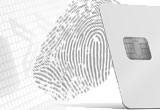2008: The year of the smart card
02 January, 2008
category: Contactless, Financial, NFC
Oberthur Card Systems predicts the smart card will become a mainstay of American wallets in 2008. Oberthur claims to be the largest producer of contactless cards in the U.S. and currently 17 of its top 20 customers, as well as the federal government, have embraced microprocessor chip cards. The company feels that this will put pressure on the last adopters of the technology who may risk the loss of market share unless they migrate to smart cards in 2008. Oberthur’s US CEO Martin Ferenczi notes other key factors that are driving this final wave of adoption such as the “cool factor” of innovative designs, increases in retailer efficiency due to contactless payments, Near Field Communication technology, and ID & security adoption of smart cards.
Oberthur Card Systems Sees 2008 as The Year of the Smart Card
Oberthur’s US CEO Martin Ferenczi Expects Massive Smart Card Adoption Next Year as Banking Industry Recognizes Benefits of the Technology
CHANTILLY, Va. – Oberthur Card Systems, a world leader in smart cards such as chip-based contact and contactless cards, predicts the smart card will become a mainstay of American wallets in 2008. Smart cards are equipped with embedded integrated circuits that enable the processing of information. Oberthur is the largest producer of contactless cards in the U.S. and currently 17 of its top 20 customers, as well as the federal government, have embraced microprocessor chip cards. This will put pressure on the last adopters of the technology who may risk the loss of market share unless they migrate to smart cards in 2008.
“It’s been a long time coming, but we see 2008 as the year that the smart card truly takes off in the Americas,” notes Ferenczi. “In fact, according to JupiterResearch, microprocessor chip cards are likely to be in more than 75 million American wallets or cell phones before the end of 2008 and more than 128 million will be in circulation by 2009.” (Currently more than 200 million Americans carry Oberthur magstripe cards, which don’t have a microprocessing chip, and many will be upgraded to contactless cards as they are renewed.)
The first large-scale adoption of smart cards was for French pay phones in 1983. Then in Europe in the early ’90s, MasterCard, Visa, and Europay agreed to develop specifications for the use of smart cards in payment cards. The smart card has long been seen as an ideal solution for securing transactions, identification and personal information. Among the security features, smart cards secure personal data on the card, which is PIN code and/or read-write protected, rather than on a server.
“This summer we still had two key concerns: whether banks with pilot projects would adopt contactless cards and if banks already using contactless cards would re-issue,” Ferenczi continues. “Both of these things are happening. Based on projected orders with our clients, we anticipate double-digit growth in the next six to nine months for our payment markets. Additionally, we expect to benefit from the ID market as the HSPD 12 2008 compliance date nears.”
“Analysts, manufacturers and the banking market have anticipated this moment for several years now,” Ferenczi concludes. “It is gratifying to see the adoption of smart cards with all the advantages they offer finally come to fruition in the Americas.”
Ferenczi notes other key factors that are driving this final wave of adoption:
Readers vs. smart cards: As noted in the 1999 bestseller “Crossing the Chasm,” use of smart cards would only take off when smart card readers were ubiquitous at retail and fast-food chains. “While initially many large fast-food chains began accepting contactless cards, this year we saw additional acceptance locations outside of the traditional fast-food locations at such retailers as Shop-Rite supermarkets, Tully’s and in vending machines,” Ferenczi notes: “As these and other well-recognized retailers adopt the technology and install these readers, banks will switch their customers over to contactless cards and, as a result, capture some of the cash market.” U.S. consumer purchases annually total $1 trillion on items valued under $15. Currently, consumers only use credit cards to pay for less than 1 percent of that total.
Contactless increases retailer efficiency: In the $120+ billion quick-service restaurant industry, transaction speed is critical. Tests show that contactless cards require half the transaction time than using cash.
Cool factor: Design innovations drive consumer interest. Oberthur’s breakthrough contactless key fobs, transparent cards and eye-catching designs are attracting banks as they strive to make their product the consumer’s “top-of-wallet” card. “Smart cards are finally looking as smart as their chips make them,” Ferenczi said.
Near Field Communication (NFC) technology spurs the convergence of mobile and payment. In 2008, Oberthur Card Systems, a Subscriber Identity Module (SIM) manufacturer, along with wireless carriers and banks will push to develop phones that use NFC. Those three industries will look to finalize a standard that will allow wireless subscribers to use their GSM phones for payment. “Oberthur’s involvement in numerous NFC pilots internationally and its SIM expertise will help guide the development and eventual sale of NFC devices,” stated Ferenczi.
ID & Security/Homeland Security Presidential Directive: HSPD-12 will come into full effect in 2008 requiring all federal government employees to have microprocessor chip cards for access to facilities and computer systems. Currently, Oberthur’s TotalIDOne FIPs 140-2 certified and FIPS 201-compliant card is a leading product with orders from the Department of Defense, GSA Managed Services, and the Transportation Worker Identification Credential Program. Oberthur is the #1 provider of Smart ID cards to U.S. federal agencies.


